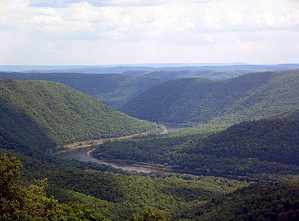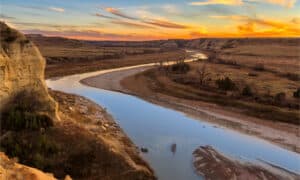It’s always important to look up a river or lake before swimming in it. Some rivers are filled with large animals that are hiding below the surface. For example, many southern states in the United States are home to alligators and crocodiles that frequent many rivers and blend well. The Brazos River is a massive river home to many animal species. But is this river safe to swim in? Where is it located it? What animals call this beautiful and long river, home? Follow along to find what is in the Brazos River.
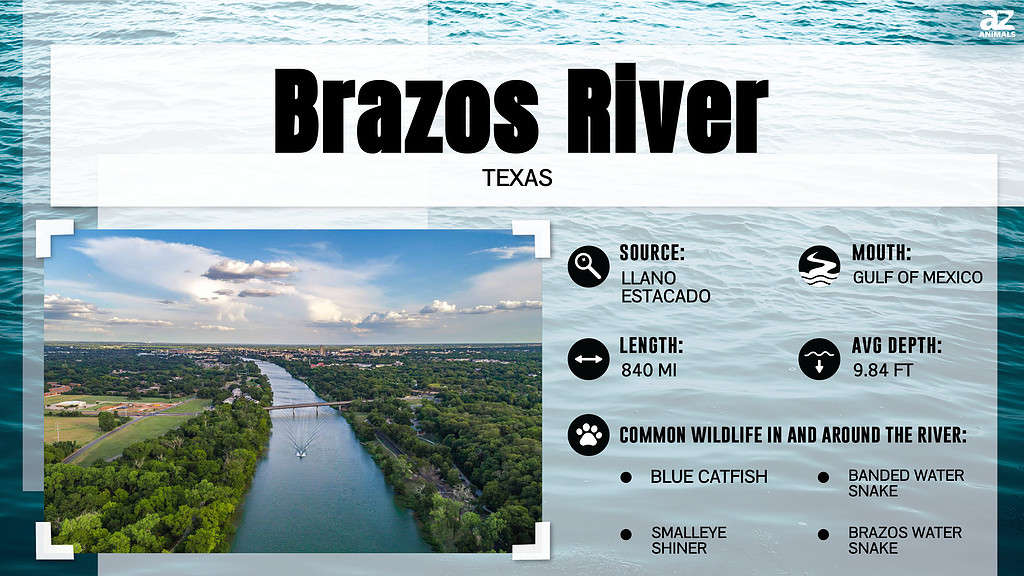
About the Brazos River
The Brazos River is a large river located in Texas. This river is the 11th longest in the nation and the longest in the state. It’s about 840 miles long with a basin size of 45,000 square miles. The width of this stunning river varies. For example, it’s about 2 miles wide near Lake Whitney and 1,000 feet wide close to Cawthorn, Texas, because of a sharp bend.
The Brazos River has a long history and is important to the development of the state. For example, as early as 1822, Anglo-American settlement sites were developed along the lower river valley of the Brazos River. Although now called the Brazos River, the Spanish referred to this long river as Los Brazos de Dios. Before railroads grew in popularity, this river was also used for transportation. Steamboats were common.
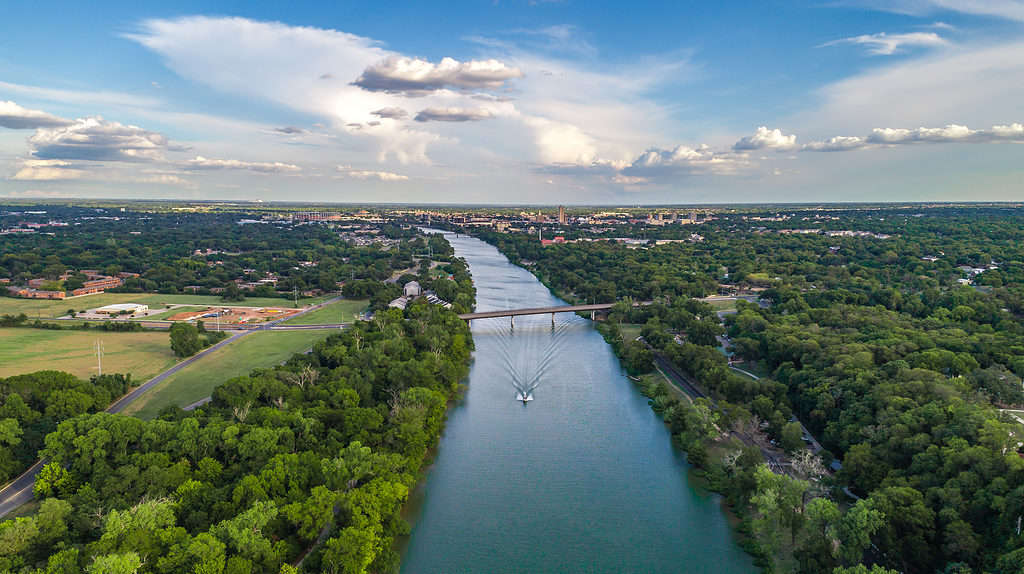
The Brazos River is beautiful. It was once called
Los Brazos de Dios, which means The Arms of God.
©davisdeatonphotography/Shutterstock.com
What Animals Live in the Brazos River?
With just how large the Brazos River is, it’s not surprising to know that it’s filled with many animals. Some of the most common animals are listed below. Maybe next time you visit this long Texas river, you can spot animals in the Brazos River.
American Alligators
Imagine taking a swim or kayaking and seeing an American alligator. Although swimming with alligators sounds terrifying, they rarely attack and usually leave humans alone. However, you should never harass or try to touch a wild American alligator. These large reptiles are found throughout the Brazos River. American alligators are especially spotted along the Brazos banks. You can see these large reptiles in Brazos Bend State Park, which is along the Brazos River.
American alligators are apex predators, although they rarely attack humans or any animal larger than them. These massive reptiles can easily grow up to 16 feet long. American alligators are native to the Southeastern United States. They can live for about 20 to 50 years in the wind. Alligators are also very old! They’ve been around for a long time. American alligators are often called living fossils. If you see an American alligator while visiting the Brazos River, stay at least 30 feet away.
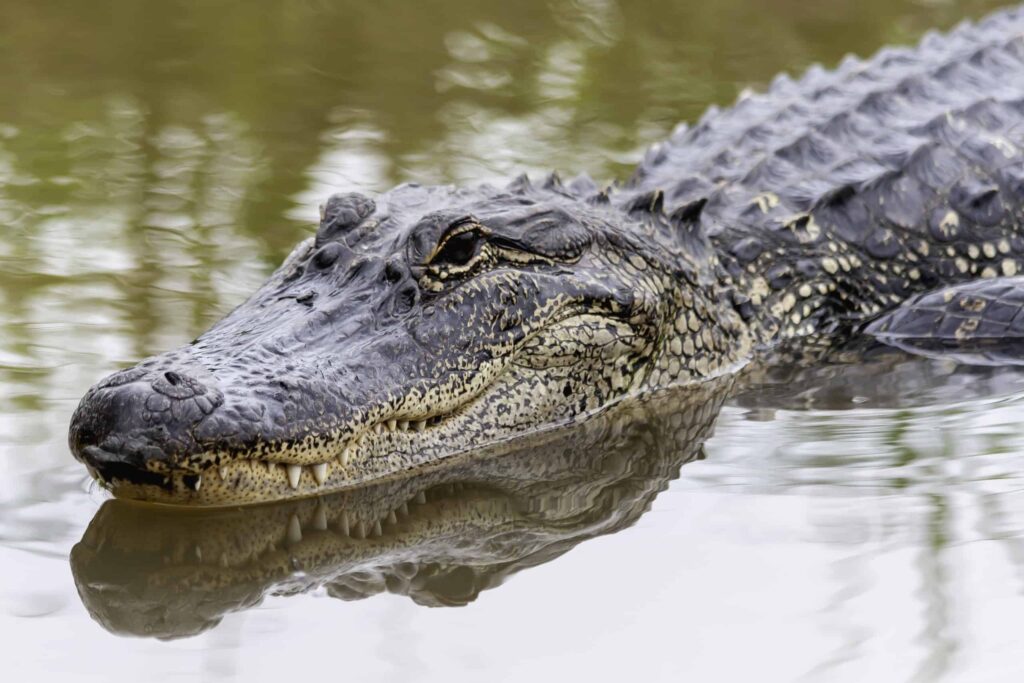
American alligators are animals that live in the Brazos River. They are common in murky waters.
©iStock.com/Cindy Larson
Blue Catfish
Blue catfish are one of the most common fish species in the Brazos River. You can find some massive and impressive blue catfish in the river. For example, the all-tackle blue catfish record for the Brazos River weighed 65 pounds. Nathan Tijerina caught this large blue catfish on August 15, 2022, with a Trotline.
Blue catfish are large North American catfish. They can easily weigh up to 150 pounds. Not only can you find this large fish in Texas rivers and lakes, but also in Ohio, Tennessee, Mississippi, and along the Gulf Coast to Belize and Guatemala.
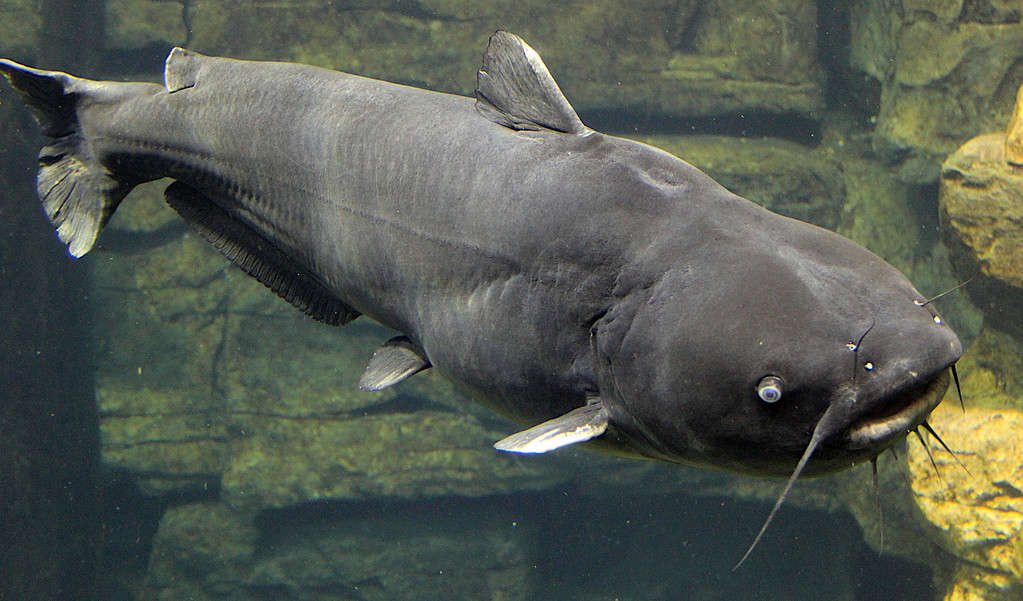
Blue catfish live in the Brazos River. The all-tackle record for this fish species is 65 pounds.
©Thomsonmg2000, cropped and adjusted by Kostka Martin / CC0 – License
Zebra Mussels
Sadly, the highly invasive zebra mussels are also found in the Brazos River basin. Zebra mussels are freshwater mussels that spread quickly. They are likely native to the lakes of southern Russia and Ukraine. The problem with these small mussels is how quickly they reproduce. In one year, a female zebra mussel can contain produce over 1 million eggs.
In North America, zebra mussels took over lakes and rivers in the 1980s. The first recorded zebra mussel in North America was found in the Great Lakes in 1988 in Canada. Zebra mussels likely made their way to North America on ocean-going ships. These hardy mussels can live for many days or weeks in low temperatures. They commonly cover the underside of boats, docks, and anchors. Although small, they compete and suffocate native freshwater mussels in rivers.
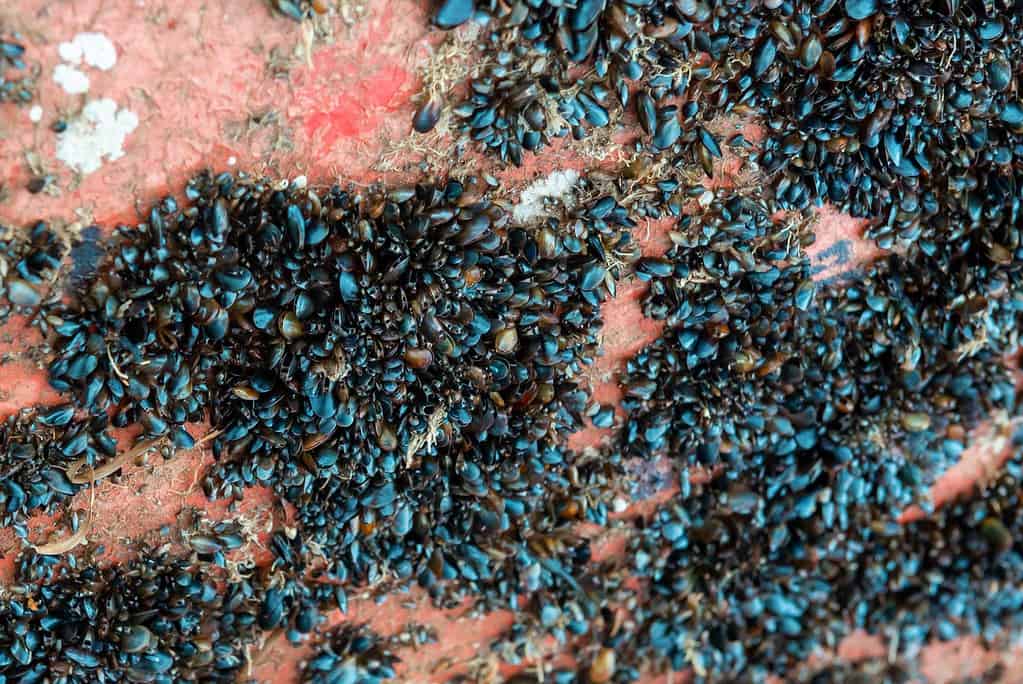
Zebra mussels are an invasive species in the Brazos River.
©Dolores M. Harvey/Shutterstock.com
Largemouth Bass
Another animal in the Brazos River is the largemouth bass. These large bass are common fish in the river, like channel catfish, blue catfish, and sunfish. Largemouth bass are found all over the world, but they are native to parts of North America, including the eastern and central United States, northern Mexico, and southern Canada.
These large freshwater fish also have many names. For example, some people call largemouth bass, green trout, bucket mouth bass, Florida bass, Potter’s fish, or Widemouth bass. These fish eat small fish, amphibians, insects, and crawfish. Largemouth bass have some predators as well, but young largemouth bass are more vulnerable. Great blue herons and bald eagles consume mature largemouth bass.
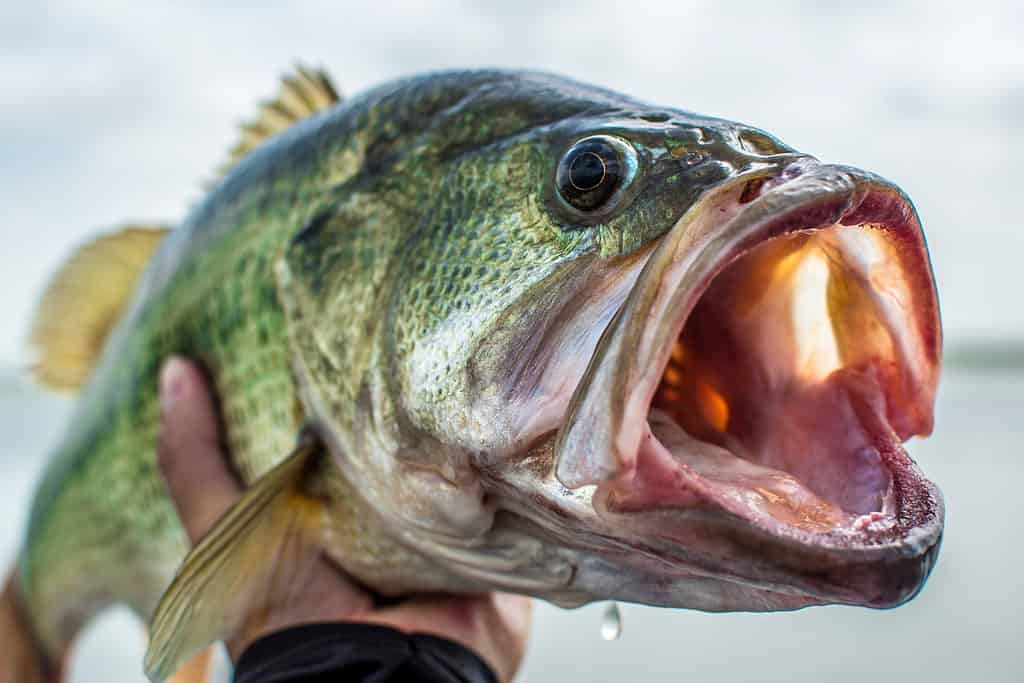
Largemouth bass are found all over the world, but they are native to parts of North America, including the eastern and central United States, northern Mexico, and southern Canada.
©Pierre Rebollar/Shutterstock.com
Texas River Cooters
Texas river cooters are freshwater turtles native to Texas. You can find them in many Texas rivers, not just the Brazos River. For example, they are common in the Guadalupe, San Bernard, and Colorado River basins. Interestingly, female Texas river cooters are larger than males. Their shells are green and can easily surpass 12 inches long. Young Texas river cooters are bright green. These river cooters also have unique yellow and black markings, but the markings fade as turtles age.
Although Texas river cooters are powerful swimmers, they are typically spotted in shallow water or resting on branches protruding out of the water.
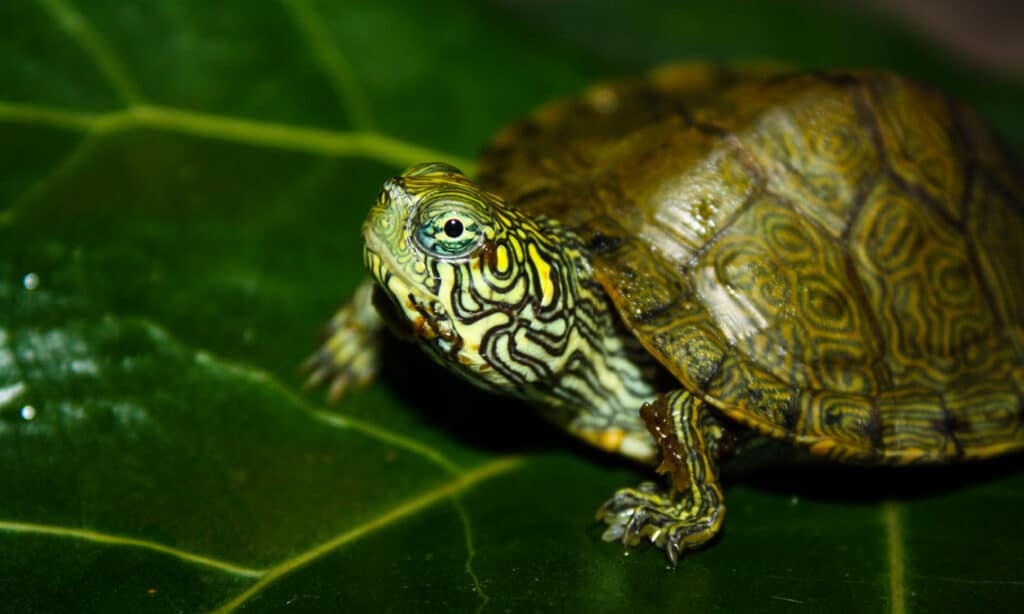
Texas river cooters are endemic to Texas. They are large and common turtles in the Brazos River.
©Bildagentur Zoonar GmbH/Shutterstock.com
Broad-banded Water Snakes
Last but not least on our list of animals found in the Brazos River is the broad-banded water snake. Its scientific name is Nerodia fasciata. This snake is also sometimes referred to as the southern water snake. They are native to the Midwest and Southeastern United States and can be found from Indiana to parts of Florida. Broad-banded water snakes are 24 to 42.1 inches long and are grey, green, or brown. As their name suggests, they also have dark crossbanding on their bodies. Some subspecies are so dark though, you can’t see the bands or markings.
Although these snakes are found throughout lakes and rivers, they also rest wrapped in low-hanging tree branches near water. Currently, there are three recognized subspecies of the broad-banded water snake, and all are found in Texas.
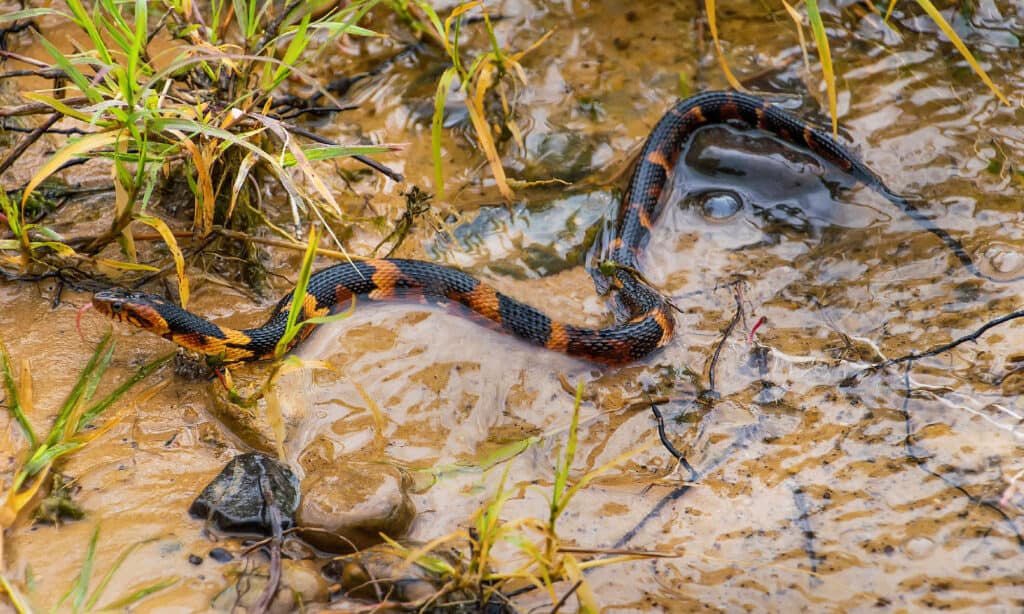
There are three recognized subspecies of the broad-banded water snake, and all are found in Texas.
©iStock.com/williamhc
Is it Safe to Swim in the Brazos River?
Wildlife is just one thing you should consider before taking a swim in any body of water. Some lakes and rivers are polluted and contaminated. You can get sick from swimming in the water or accidentally drinking it. But what about the Brazos River? Is the Brazos River safe to swim in? Only some lakes in the Brazos River basin are safe for swimming. Always look for signs that permit or don’t allow swimming. For example, some lakes and swimming holes have bacteria, which can increase your risk of waterborne exposure. This is more common in stagnant and still water.
The photo featured at the top of this post is © iStock.com/Hudley_Photography
Thank you for reading! Have some feedback for us? Contact the AZ Animals editorial team.



